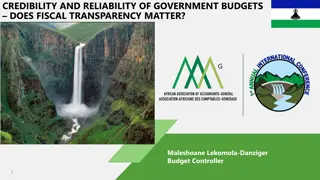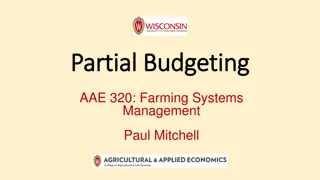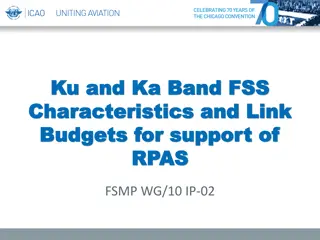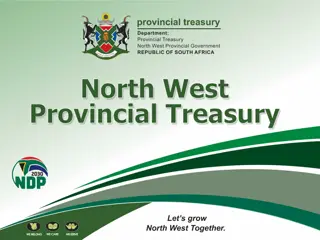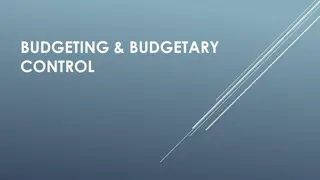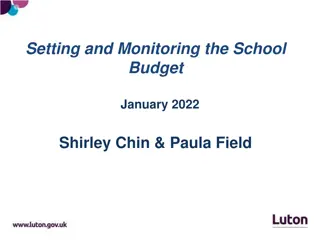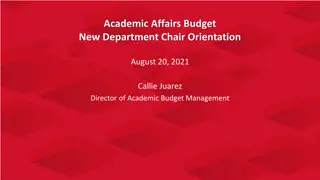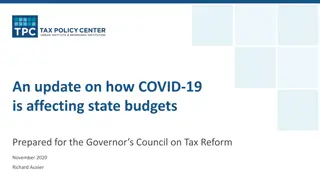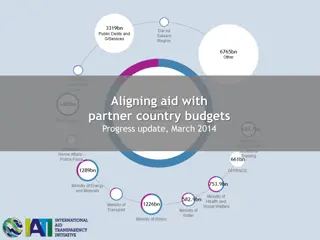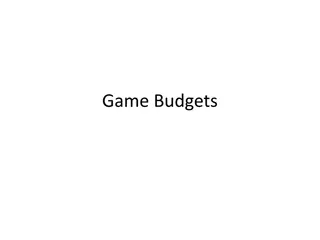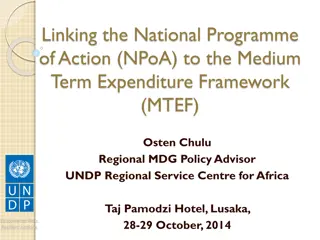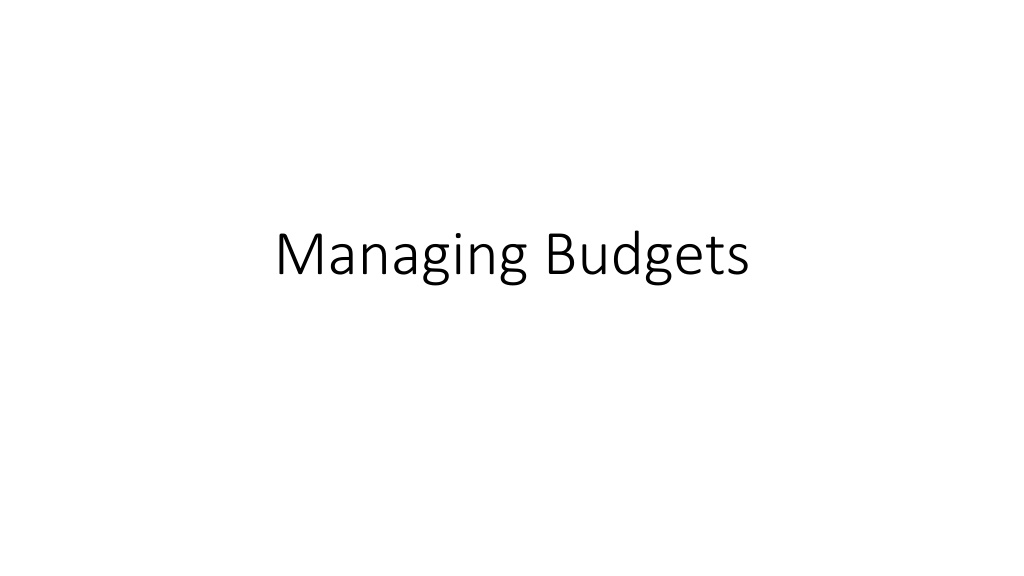
Effective Budget Management Strategies and Alternatives
Explore the intricacies of managing budgets, including planning and operational variances, along with insights into budgetary planning, budgeting phases, comprehensive budgeting impacts, and criticisms of traditional budgeting. Discover alternative approaches such as rolling forecast and zero-based budgeting.
Download Presentation

Please find below an Image/Link to download the presentation.
The content on the website is provided AS IS for your information and personal use only. It may not be sold, licensed, or shared on other websites without obtaining consent from the author. If you encounter any issues during the download, it is possible that the publisher has removed the file from their server.
You are allowed to download the files provided on this website for personal or commercial use, subject to the condition that they are used lawfully. All files are the property of their respective owners.
The content on the website is provided AS IS for your information and personal use only. It may not be sold, licensed, or shared on other websites without obtaining consent from the author.
E N D
Presentation Transcript
Question 2 Question 2: total planning and operational variances Suppose a budget is prepared which includes a raw materials cost per unit of product of Rs. 2 (2kg of copper at Rs. 1 per kg). Due to a rise in world prices for copper during the year, the average market price of copper rises to Rs. 1.50 per kg. During the year, 1000 units were produced at a cost of Rs. 3,250 for 2,200kg of copper. Calculate the planning and operational variance Quetion3: planning variances and sub- variances The standard materials cost of a product is 3kg. Rs. 1.50 per Kg=Rs. 3.50. Actual production of 10,000 units used 28,000 kg at a cost of Rs. 50,000. In retrospect it was realized that the standard materials cost should have been 2.5kg per unit at a cost of Rs. 1.80 per kg (so that the total cost per unit was correct) Calculate the planning and operational variances in as much detail as possible
Budgetary planning What is a budget? Annual plan of the managing the business Fixed for the 12 months Identify the impact on bottom-line, cash flow and the balance sheet
Budgeting can be used as a planning tool by Management .Therefore primary phases of the budgeting are Planning Control or performance evaluation
Why comprehensive budgeting Identify the organizational interrelated impact on the operational income, financial position and The cash flow. Fixed budget Defined period, usually 12 months by month
Problems with traditional budgeting In general, the literature related to the criticism against budgeting can be roughly divided into two main groups; while others argue that the use of budgets is fundamentally defective, others argue that the problems emerge only because of the way that budgets are used. Game playing (Dysfunctional behavior of the departmental heads) Time related issue (Planning and implementation gap , negotiation and approval Strategic issues/not fit with the purpose and the strategy (Libby and Lindsay, 2010)
Alternative approaches Rolling forecast Activity based budgeting (ABB) Zero based budgeting Beyond budgeting
Rolling forecast Rolling forecast After every month/quarter numbers will be updated by considering the latest changes in the external environment. Very much forward looking, fact based exercise Identify the latest risk and opportunities and their impact on bottom line
Factors to be Factors to be considered considered Time horizon Participation Modeling Risk and uncertainty Culture
Budgeting and strategy Strategic planning precedes budgeting and provides the framework within which the annual budget is developed. A budget is, in a sense, a one-year slice of the organization s strategic plan .
Purposes of budgeting Implement strategy by allocating resources in line with strategic goals Co-ordinate activities and assist in communication among different parts of an organisation Motivate managers to achieve targets Provide a means to control activities Evaluate and business unit performance
Budget cycle 1. 2. Identify business objectives Forecast future conditions (1) general economic conditions, (2) industry trends, (3) market research studies, (4) anticipated advertising and promotion, (5) previous market share, (6) changes in prices, and (7) technological developments Develop detailed sales budgets by market segments, major customers and product groups Prepare production budgets for the goods or services needed to satisfy the sales forecast and maintain agreed levels of inventory. 3. 4.
Budget cycle (cont.) 5. Prepare expense budgets by cost centre 6. 7. Prepare capital expenditure budgets Prepare cash forecasts and identify financing requirements Prepare master budget (Income Statement, Balance Sheet and Cash Forecast) 8. 9. Obtain Board approval of profitability and financing targets
The Master Budget The Master Budget is a set of interrelated budgets that constitutes a plan of action for a specified time period. 17
Formats of the operational and financial budgeting




